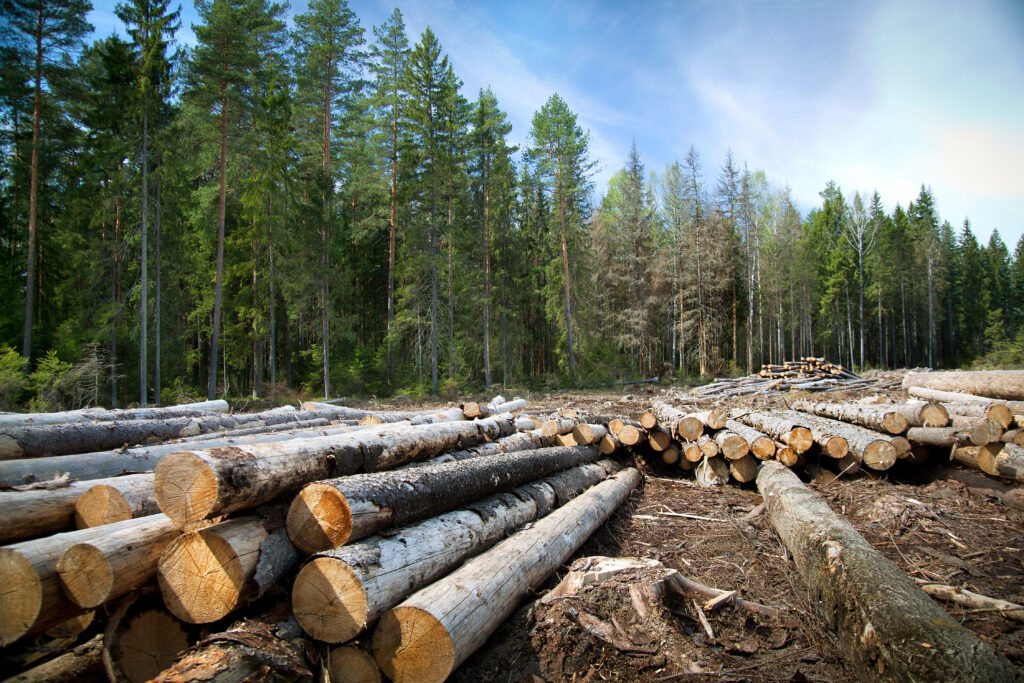Facing Facts in Forestry: Enhanced Data Requirements under EUDR

Facing Facts in Forestry: Enhanced Data
For the past decade, timber suppliers have been expected to adhere to strict regulations to prevent illegal logging and contribute to sustainable forest management worldwide.
However, with the implementation of the EU Deforestation Regulation (EUDR 2023/1115), these same suppliers, along with various other commodity producers, now face increased pressure to improve data transparency and traceability from source to sale.
In this article, we will provide an overview of the enhanced data requirements stipulated by the new regulation and how many timber suppliers might already be well on their way to thriving in a sustainable market.
How does EUDR affect the forestry industry?
EUDR is a new regulation introduced by the European Union to curb deforestation and degradation. Starting December 30, 2024, companies producing a wide variety of commodities can only place their products on the EU market if they have not been linked to deforestation and/or forest degradation since December 31, 2020.
To comply with the regulation, affected businesses must provide comprehensive data and documentation covering various aspects of their entire supply chain. One of the most significant changes is the requirement to provide geolocation data.
Geolocation data required by EUDR
The core goal of EUDR is to eliminate deforestation and forest degradation. Achieving this requires full transparency regarding the land on which commodities have been produced. However, compiling this data has always been, and continues to be, a significant challenge.
Operators and traders must include the geographic coordinates of producing plots of land within their due diligence statement (DDS) to ensure that products do not come from land linked to deforestation or forest degradation.
For plots of land larger than four hectares, polygons must be used to establish the perimeter of each site. For smaller plots, polygons or a single point of latitude and longitude can be used instead.
Providing this information before placing products on the market is essential to honouring the new EUDR stipulations. However, as the global supply chain expands into complex ecosystems containing suppliers of all shapes and sizes, establishing the boundaries of every single plot used is no easy task.

Risk analysis under EUDR
Compliance with the EUDR goes beyond the absence of deforestation and/or forest degradation. Operators and traders must also demonstrate compliance with local laws wherever they operate, including protecting human rights and maintaining ethical working practices across the supply chain. Combined with your risk classification under the EUDR’s country benchmarking system, all parties must conduct a risk analysis to determine whether their operations and supply chains continue to meet these rigorous requirements.
Failure to adequately address identified risks could result in significant penalties and jeopardise market access within the European Union. However, the complexity of compiling the required risk analysis will vary among producers, as some will face more challenges due to differences in their production processes, supply chains, and the strictness of laws within each country.
As mentioned at the beginning of this article, the forestry industry has already been subject to increased scrutiny through the EU Timber Regulation (EUTR). This regulation has recognised and enhanced ethical and environmentally responsible practices in timber production. Although the EUDR is much broader in scope and requires a higher level of due diligence and reporting, the process taken by many timber producers to prevent illegal logging and comply with EUTR positions them well to meet the enhanced efforts required under EUDR.
EUDR vs EUTR
Firstly, EUTR has already obliged timber operators and traders to collect data from their supply chain, including forest origin, compliance documents, and permits. Though the information relating to location, in particular, will certainly need to be augmented to include the geolocation data required by EUDR, the process of establishing the origin of products is already firmly entrenched in the industry, even if it relates to a different mandate.
Secondly, those complying with EUTR must also evaluate and mitigate risks wherever possible. Under EUTR, these risks pertain to illegal timber logging. In contrast, EUDR dictates a much wider scope where deforestation or forest degradation must not have occurred at the point of origin, whether legal or otherwise. Therefore, the mechanics of risk analysis, already a key part the timber industry’s legal obligations, will continue to be essential under the EUDR.
To comply with the new regulations, timber operators and traders are not starting from scratch. Instead, they need to upgrade their risk assessments to meet the latest definitions and criteria imposed by the EUDR.
Certification and EUDR Compliance
Certification can be a crucial step in demonstrating your commitment to sustainable and ethical production practices. It helps ensure you meet your obligations, introduce your products to new markets, improve the quality of your management processes, and enhance health and safety across the supply chain.
For over 30 years, we have helped companies working in the forestry industry to achieve certifications from various trusted programs. This includes globally accredited and recognised Forest Stewardship Council (FSC®) and Programme for the Endorsement of Forest Certification (PEFC™), as well as the Timber Legality Verification (TLV) designed by Control Union and recently adapted to align with EUDR’s requirements, criteria and definitions.

How can I help you?
Do you have any questions regarding EUDR, are you looking for a certain service or do you want to apply for a certification program? Let me know. My name is James and I’m glad to be of help!